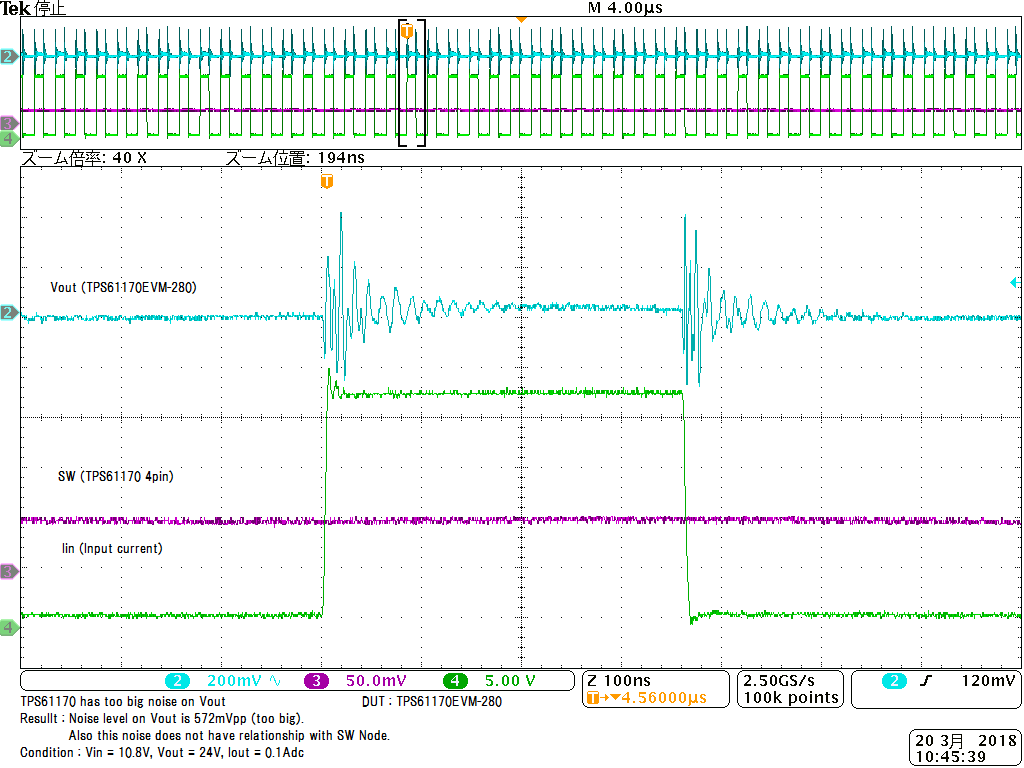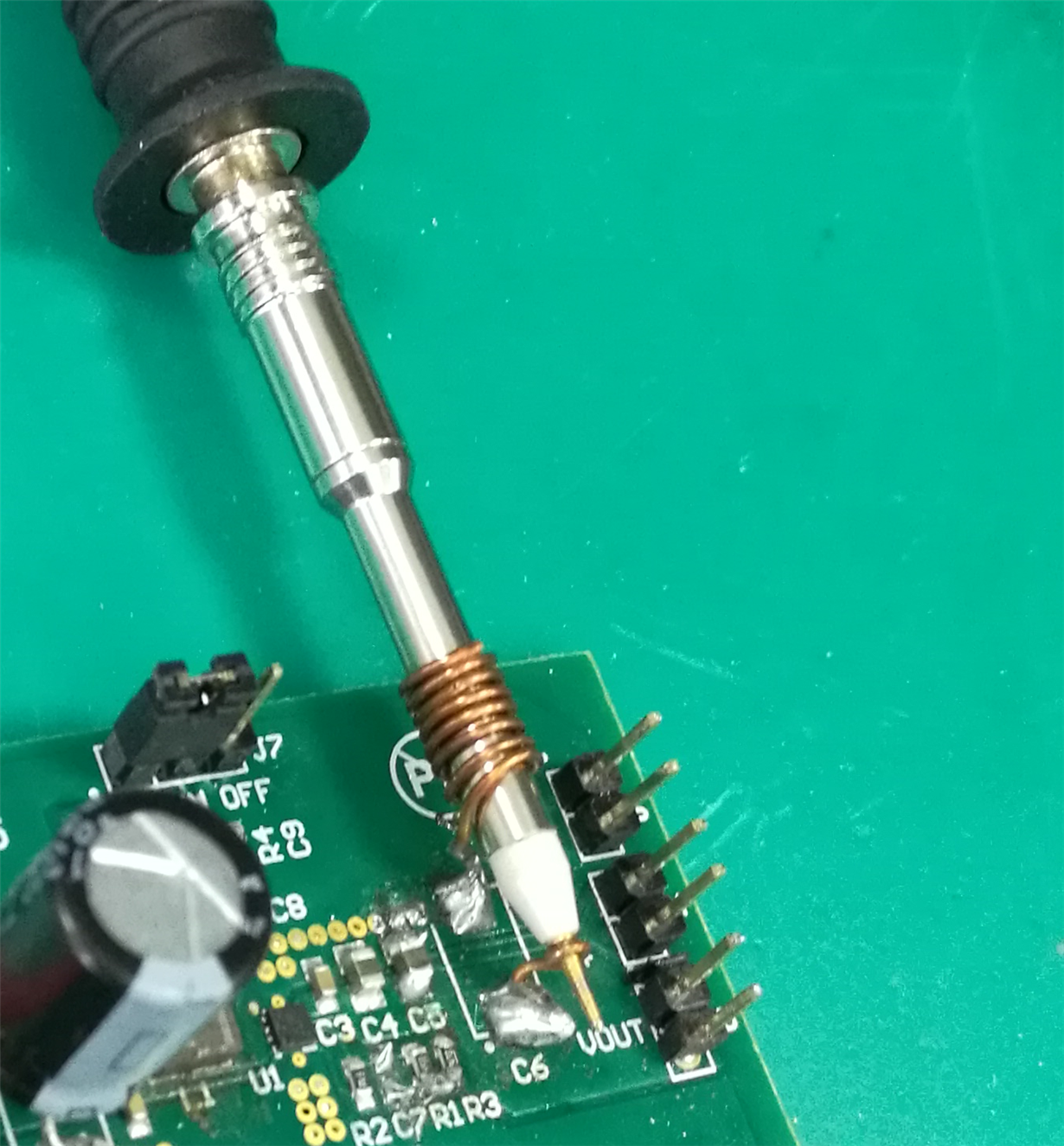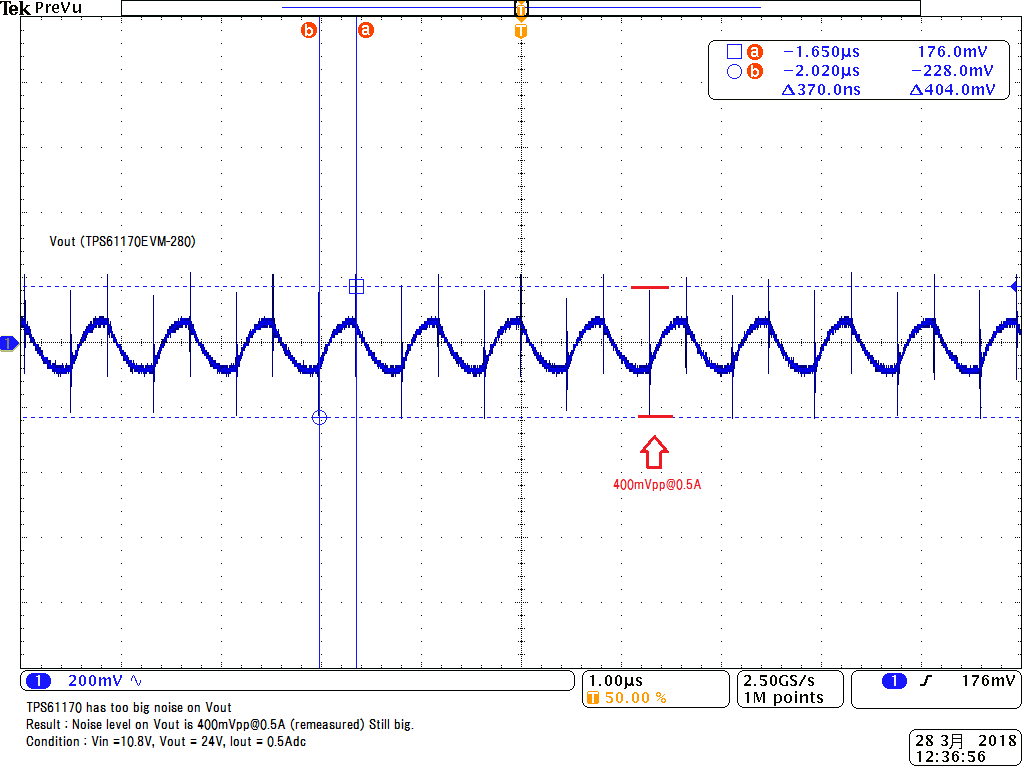Dear sir,
I bought TPS61170EVM-280 and checked Vout under the following configuration.
Vout = 24V (original setting)
Iout = 0.1Adc (electric load)
Only use TPS61170EVM board (no connect with USB control)
And I found the issue that TPS61170 has too big noise on Vout which looks like no relationship with SW-node.
The noise level is about 570mVpp (too big). Please see the attached waveform and give an advice.





